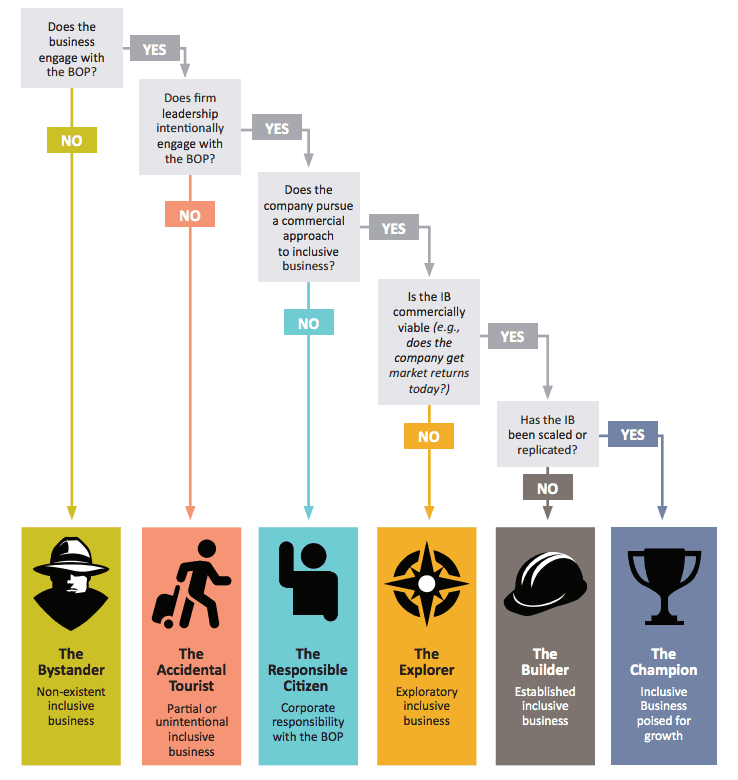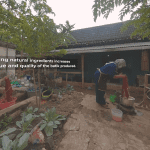How Can Inclusive Business Advance the SDGs?
Since the announcement of the Sustainable Development Goals (SDGs) in September 2015, the SDG discourse has become mainstream. The business sector is an especially relevant audience for those promoting a global commitment to achieve the SDGs, mainly because they, through some of the stated goals, talk directly to business and its performance (e.g., SDG 8, “Decent work and economic growth”; 12, “Responsible consumption and production”; 13, “Climate action”). The question on the table is: How can business address the SDGs? What are the specific mechanisms that the business sector has in its pocket?
In 2016, some non-academic publications focused on companies were released in the context of the SDGs’ first anniversary. At least two of them shared the view that inclusive business (IB) is a part of the solutions to deliver on the SDGs.
Let’s take a look at “Delivering on the Sustainable Development Goals: The inclusive business approach,” published by the World Business Council for Sustainable Development (WBCSD). In 11 pages, this booklet briefly presents the business case of IB, the internal and external barriers to starting an IB, and a list of examples – for each SDG – in which an inclusive business approach has the possibility to generate value.
In the example for SDG 1 (“End poverty in all its forms everywhere”) the booklet lists “Bank the unbanked through micro-credits and financial services (leveraging local distribution and mobile technology); micro-insurance products to increase resilience of low-income populations.” The example for SDG 2 (“End hunger, achieve food security and improved nutrition and promote sustainable agriculture”) reads: “Produce and provide access to fortified food and supply of micronutrients; develop innovative and more efficient farming technologies to increase productivity and income of smallholder farmers.”
For non-specialized audiences, this booklet is useful to start on a path toward IB. However, it does not add new elements for current practitioners.
The second document, “Uncharted Waters: Blending Value and Values for Social Impact Through the SDGs,” published by the United Nations Development Programme, Istanbul International Center for Private Sector in Development and Business Call to Action, includes:
- A description of five sectors highly relevant for IB in the context of the SDGs
- A scale of IB maturity
- An understanding of the entire IB process
The five promising sectors for IB – food and beverage, infrastructure, health, education and financial services – were established considering unmet needs and the possibility to obtain financial returns. For each sector, the role of BoP communities is defined (suppliers and/or customers) and examples of “primary business models employed” are included, as well as key considerations. These sectors are broad enough to allow any current IB practitioners to frame their project within one of them. The document is especially valuable for those looking for a comprehensive spectrum of proven models in their particular sector.
Furthermore, the report offers an interesting and simple perspective about maturity, which allows businesses to identify “the state of their existing IB efforts.” This scale includes six levels delineated below, from “The Bystander” to “The Champion”:

Source: United Nations Development Programme, Istanbul International Center for Private Sector in Development, Business Call to Action
This tool can help practitioners understand their current condition, but is probably more helpful for organizations that provide support for IB development.
Finally, the report presents a detailed review of the IB process, presented as a journey through awareness, understanding, evaluation, iteration and improvement. This process comes along with the maturity approach and is enriched by a step-by-step guide.
This tool is undoubtedly relevant for practitioners who are paving the way inside their own companies, who are on the road to IB but wondering what comes next.
Like the WBCSD, the authors of “Uncharted Waters” include an appendix showing several kinds of business contributions to the SDGs. They’re segmented by BoP engagement type: producers and/or suppliers, distributors and customers.
For SDG 1 the example includes:
- Producers/suppliers: Empower individuals to lift themselves out of poverty by engaging them as suppliers, providing an increased or more stable (e.g., promised) source of income
- Distributors: Empower individuals to lift themselves out of poverty by engaging distributors as employees or third-party vendors, providing them with an increased or more stable source of income
- Consumers: Provide customers with access to basic goods and services, appropriate technology or financial services
IB and the SDGs
Hopefully, this brief review of these two publications allows us to reflect on how the conversation about inclusive business and the SDGs is evolving. Certainly, there is a sign of progress; IB is now widely known as a significant link between business and the SDGs. Thanks to the two documents, we have an extensive list of possibilities for IB action within the framework of the sustainable development agenda. However, we still need to go deeper in the conversation and ask for impacts, measurements and the connection between the advancement of specific IB cases with the achievement of SDG targets.
Jenny Melo, an independent researcher and consultant, is co-founder and knowledge director at Innove.
Photo by Leonora (Ellie) Enking via Flickr
- Categories
- Education, Energy, Environment, Health Care, Social Enterprise



